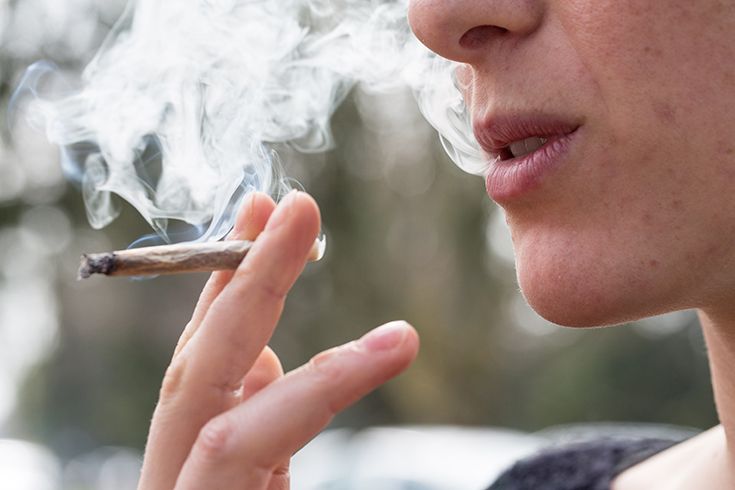Marijuana and Oral Health: Is Smoking Weed Bad for Your Teeth

With the growing decriminalization of marijuana across various states and the expanding social acceptance of cannabis, more people than ever before are curious about its effects. One particular area of interest is how it affects oral health.
Whether you’re a long-time user or just exploring for the first time, you may wonder, “is smoking weed bad for your teeth?”
Read on to learn more about cannabis and oral health and discover practical tips to keep your smile bright.
Is Smoking Weed Bad for Your Teeth?
Is weed bad for your teeth? If you’re not practicing good oral hygiene, it can be.
While research on long-term marijuana use is ongoing, existing studies and dental professionals generally agree that smoking weed may pose risks to your oral health. Cannabis smoke contains chemicals and irritants that can affect your teeth and gums over time. Regular exposure to these substances can lead to inflammation of the gums, a dry mouth environment, and a higher likelihood of plaque buildup.
Can Smoking Weed Cause Cavities?
Yes, weed can create an environment in your mouth that may make you more susceptible to cavities. The issue primarily arises from marijuana’s tendency to reduce saliva production, a condition known as “cottonmouth.”
Saliva is a natural defense against bacteria; it helps wash away food particles and neutralize acids. Bacteria are more likely to stick around and create cavities when you lack saliva.
Over time, this dryness can lead to an increased risk of tooth decay if you don’t adopt proper preventive measures.
Tips to Combat Cavities
- Stay Hydrated: Drink water frequently to keep your mouth moist.
- Chew Sugar-Free Gum: Stimulates saliva flow.
- Use a Fluoride Toothpaste: Strengthens enamel and helps prevent decay.
- Regular Dental Checkups: Professional cleanings and exams can catch early signs of cavities.
Does Smoking Weed Make Your Teeth Yellow or Stain Them?
Does smoking weed stain teeth? Just like tobacco smoke, cannabis smoke can contribute to discoloration over time. Tar, resins, and other substances in marijuana smoke can cling to tooth enamel, causing yellow or brownish stains. And the more frequently you smoke weed, the more susceptible you are to staining your teeth.
Preventing or Minimizing Stains
- Brush and Floss Twice a Day: Removes surface stains and buildup.
- Rinse with Mouthwash: Helps clear away lingering particles that may contribute to discoloration.
- Schedule Regular Professional Cleanings: Removes deeper stains and polishes teeth for a brighter smile.
Should You Brush Your Teeth After Smoking?
Should you brush your teeth after smoking weed? Absolutely. Brushing your teeth and rinsing your mouth after smoking weed can help remove residual substances that could contribute to stains, gum irritation, and dryness.
Keep a travel-sized toothbrush and toothpaste handy if you’re on the go, or at least rinse thoroughly with water until you can brush.
How to Smoke Without Ruining Your Teeth
Smoking in any form comes with risks, but if you choose to use marijuana, you might wonder how to smoke without ruining your teeth. While total prevention of negative effects is challenging, here are some strategies:
- Use a Water Filtration Device: A bong or water pipe may help cool and filter smoke.
- Consider Edibles or Vaping: These alternatives may reduce exposure to smoke-related irritants, though vaping and edibles have their own considerations, such as the sugar content in edibles.
- Practice Excellent Oral Hygiene: Frequent brushing, flossing, and rinsing can mitigate the effects of smoking on your teeth.
- Visit Your Dentist Regularly: Early detection and intervention can prevent minor issues from escalating.
Additional Considerations for Cannabis and Oral Health
Modern research continues to explore the broader implications of cannabis and oral health. Some studies link heavy marijuana use with a higher incidence of gum disease (periodontitis), which can progress to tooth loss if not managed properly.
As the legal landscape evolves and more people turn to cannabis for medicinal or recreational purposes, it’s especially important to stay proactive about your dental care.
Quick Tips
- Stay Hydrated
- Use Sugar-Free Products
- Watch for Symptoms: Bleeding gums, persistent bad breath, and tooth sensitivity may signal a problem.
- Keep Your Dentist Informed: Being open about cannabis use helps your dental team tailor your care.
Combat Marijuana-Caused Issues: Schedule Your Dental Checkup Today
Whether or not you regularly use cannabis, staying on top of your oral health can make a world of difference. Regarding oral health, prevention and early intervention are key.
Don’t let marijuana-related oral health issues sneak up on you. Find a local Bright Now! Dental location and schedule a full checkup and professional teeth cleaning to keep your smile healthy and bright.
Our experienced staff can help you address any concerns, provide personalized hygiene tips, and offer effective treatment plans. Make an appointment today to ensure your teeth and gums get the care they deserve.

